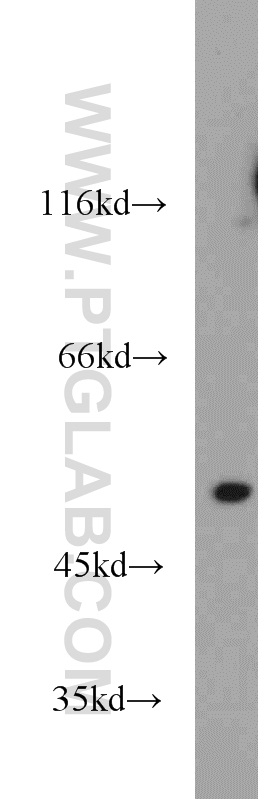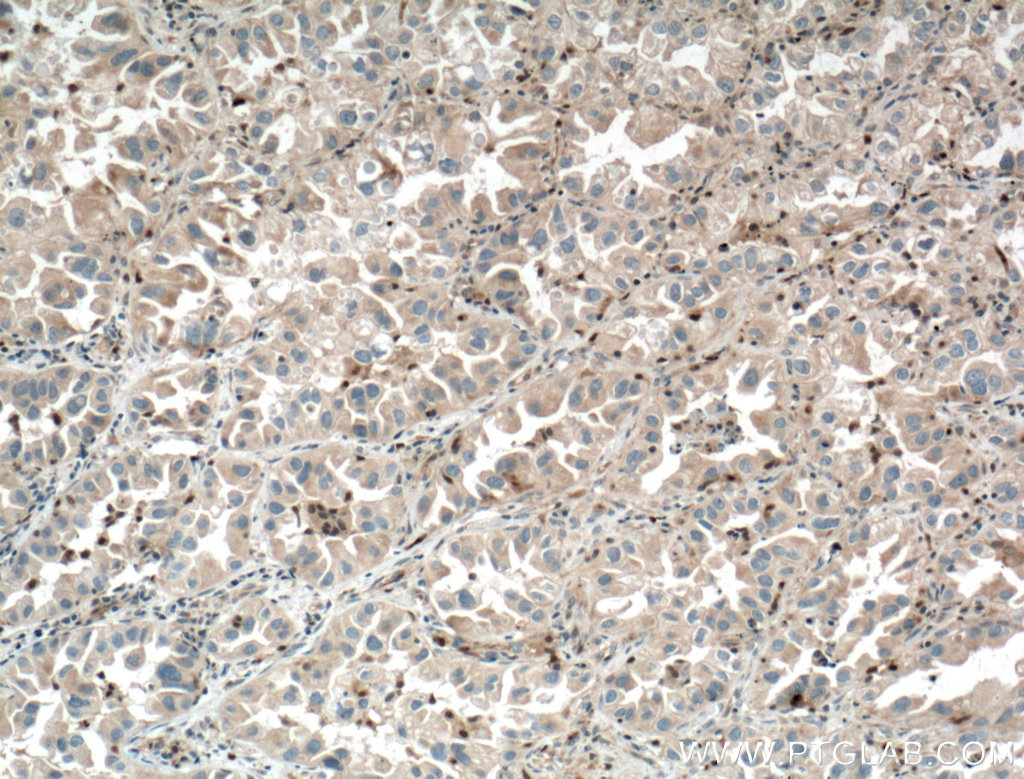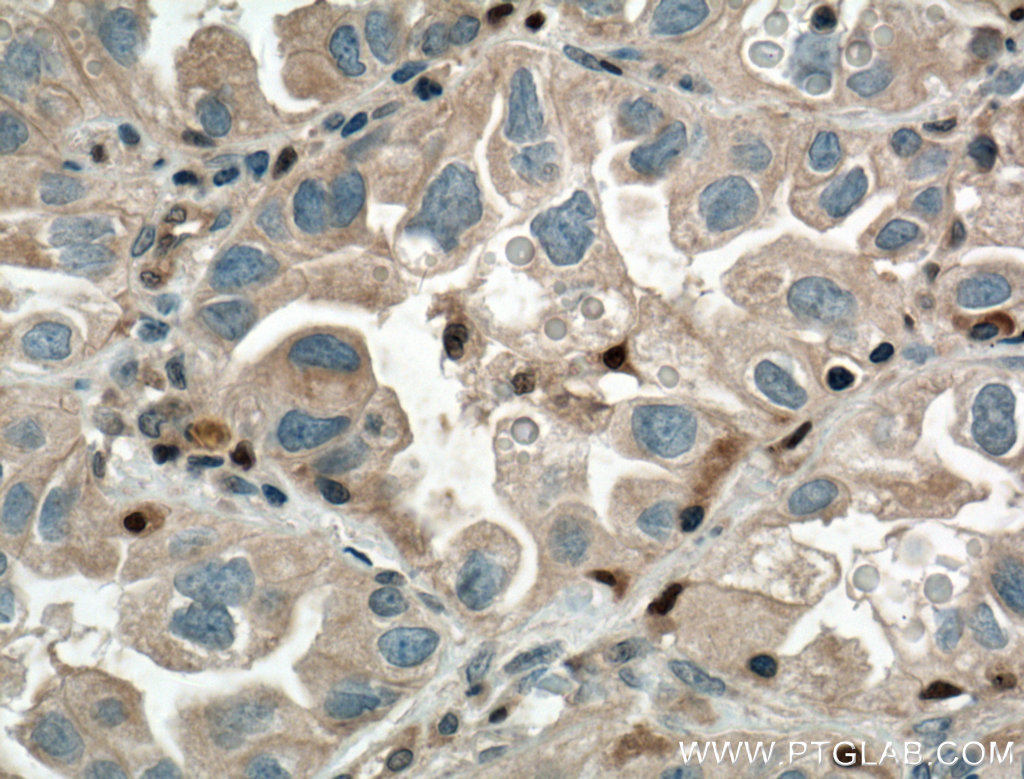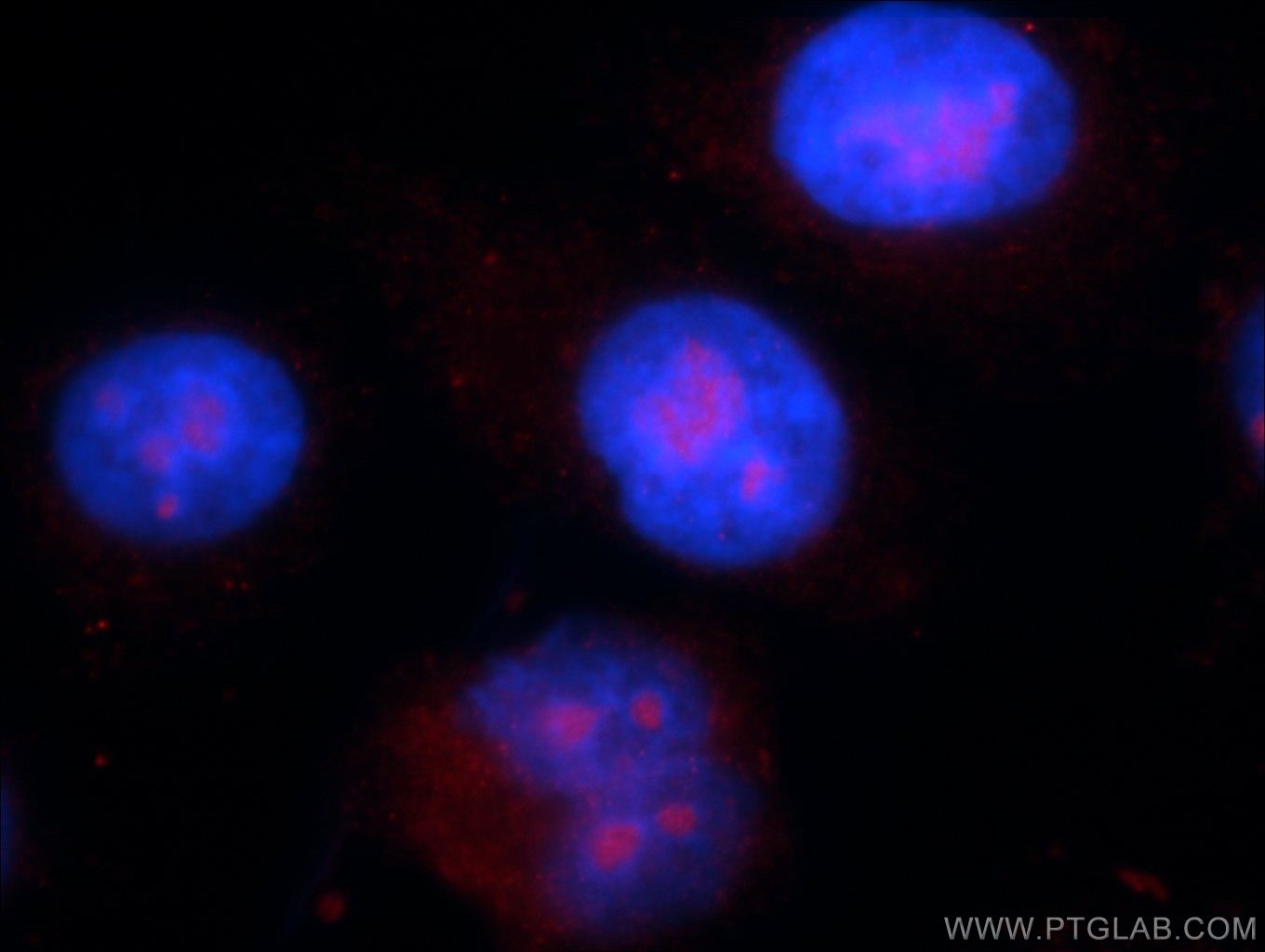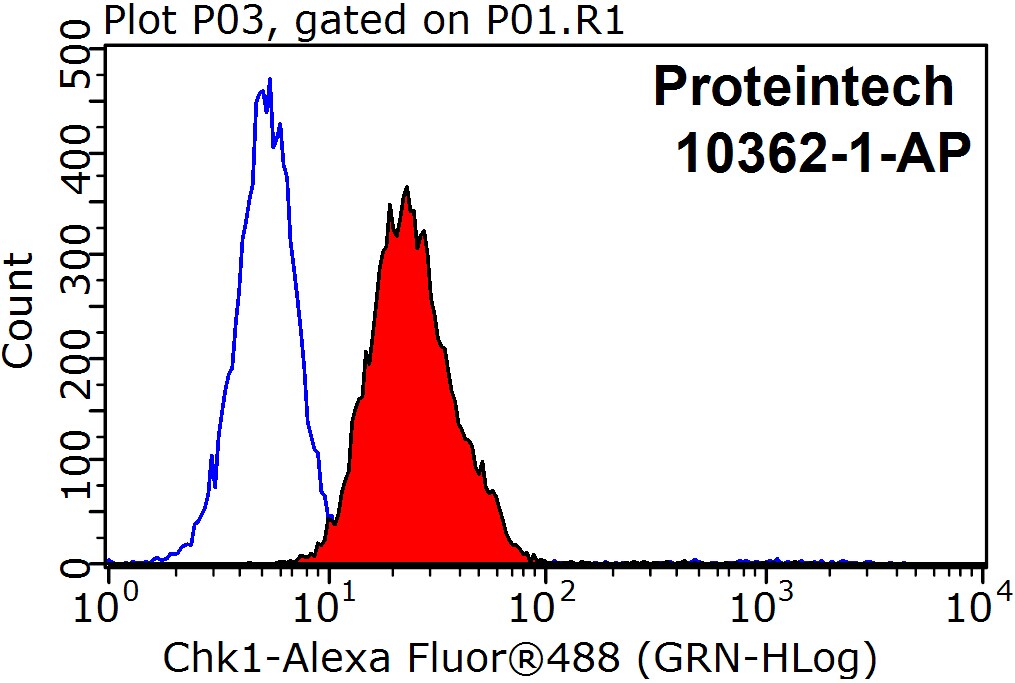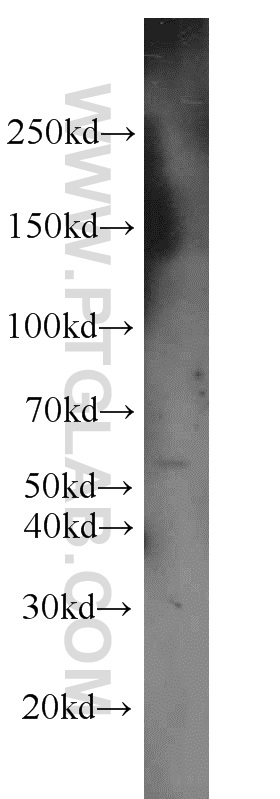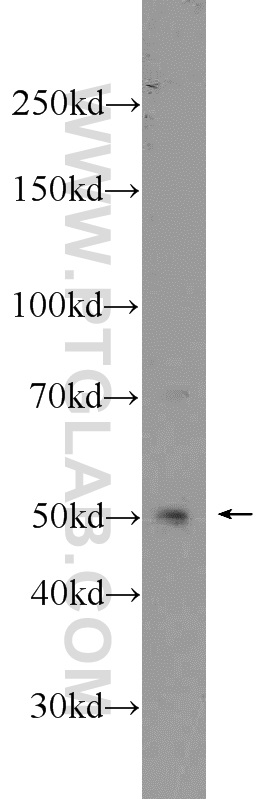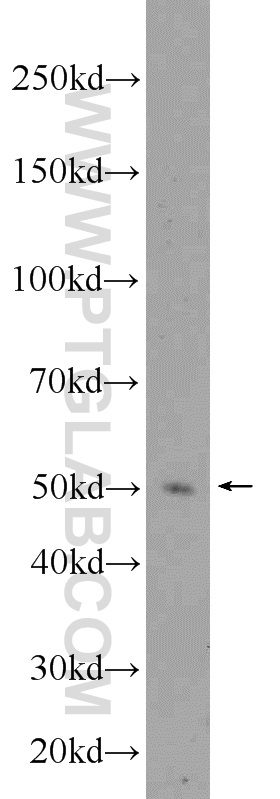- Featured Product
- KD/KO Validated
Chk1 Polyclonal antibody
Chk1 Polyclonal Antibody for FC, IF/ICC, IHC, WB,ELISA
Host / Isotype
Rabbit / IgG
Reactivity
human, mouse, rat
Applications
FC, IF/ICC, IHC, WB,ELISA
Conjugate
Unconjugated
验证数据展示
经过测试的应用
| Positive WB detected in | mouse thymus tissue, HeLa cells, K-562 cells |
| Positive IHC detected in | human lung cancer tissue Note: suggested antigen retrieval with TE buffer pH 9.0; (*) Alternatively, antigen retrieval may be performed with citrate buffer pH 6.0 |
| Positive IF detected in | HepG2 cells |
| Positive FC detected in | HepG2 cells |
推荐稀释比
| Application | Dilution |
|---|---|
| Western Blot (WB) | WB : 1:500-1:1000 |
| Immunohistochemistry (IHC) | IHC : 1:50-1:500 |
| Immunofluorescence (IF) | IF : 1:10-1:100 |
| Flow Cytometry (FC) | FC : 0.20 ug per 10^6 cells in a 100 µl suspension |
| It is recommended that this reagent should be titrated in each testing system to obtain optimal results. | |
| Sample-dependent, Check data in validation data gallery. | |
产品信息
10362-1-AP targets Chk1 in WB, IF, FC, IHC, ELISA applications and shows reactivity with human, mouse, rat samples.
| Tested Applications | FC, IF/ICC, IHC, WB,ELISA |
| Cited Applications | WB, IHC |
| Tested Reactivity | human, mouse, rat |
| Cited Reactivity | human, mouse, rat |
| Immunogen | Chk1 fusion protein Ag0409 种属同源性预测 |
| Host / Isotype | Rabbit / IgG |
| Class | Polyclonal |
| Type | Antibody |
| Full Name | CHK1 checkpoint homolog (S. pombe) |
| Synonyms | CHEK1, Chk1 |
| Calculated Molecular Weight | 54 kDa |
| Observed Molecular Weight | 50-55 kDa |
| GenBank Accession Number | BC004202 |
| Gene Symbol | CHEK1 |
| Gene ID (NCBI) | 1111 |
| Conjugate | Unconjugated |
| Form | Liquid |
| Purification Method | Antigen affinity purification |
| UNIPROT ID | O14757 |
| Storage Buffer | PBS with 0.02% sodium azide and 50% glycerol pH 7.3. |
| Storage Conditions | Store at -20°C. Stable for one year after shipment. Aliquoting is unnecessary for -20oC storage. |
背景介绍
实验方案
| Product Specific Protocols | |
|---|---|
| WB protocol for Chk1 antibody 10362-1-AP | Download protocol |
| IHC protocol for Chk1 antibody 10362-1-AP | Download protocol |
| IF protocol for Chk1 antibody 10362-1-AP | Download protocol |
| FC protocol for Chk1 antibody 10362-1-AP | Download protocol |
| Standard Protocols | |
|---|---|
| Click here to view our Standard Protocols |
发表文章
| Species | Application | Title |
|---|---|---|
Nat Commun Human Tra2 proteins jointly control a CHEK1 splicing switch among alternative and constitutive target exons.
| ||
Proc Natl Acad Sci U S A Checkpoint kinase 1 (Chk1)-short is a splice variant and endogenous inhibitor of Chk1 that regulates cell cycle and DNA damage checkpoints. | ||
Oncotarget UBE2D3 gene overexpression increases radiosensitivity of EC109 esophageal cancer cells in vitro and in vivo. | ||
EBioMedicine High PARP-1 expression predicts poor survival in acute myeloid leukemia and PARP-1 inhibitor and SAHA-bendamustine hybrid inhibitor combination treatment synergistically enhances anti-tumor effects. | ||
Cell Death Dis HBV infection potentiates resistance to S-phase arrest-inducing chemotherapeutics by inhibiting CHK2 pathway in diffuse large B-cell lymphoma. | ||
Cell Death Dis PFKFB3 blockade inhibits hepatocellular carcinoma growth by impairing DNA repair through AKT. |
